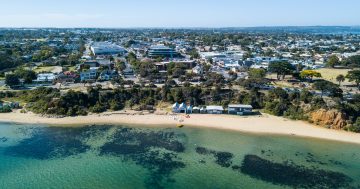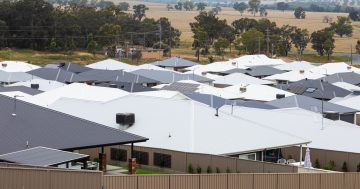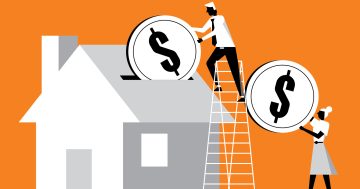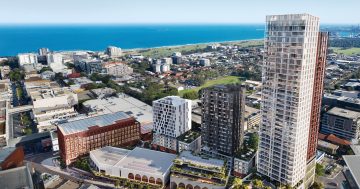Daniel Ziffer* looks at the state of the housing market around the country and warns sellers and purchasers not to get wrapped up in the hype of falling prices.
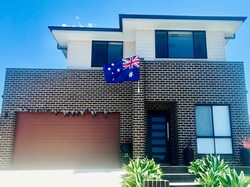 Don’t freak out about falling house prices. But don’t get too excited about potential bargains either.
Don’t freak out about falling house prices. But don’t get too excited about potential bargains either.
The median price of dwellings (houses and units) has fallen 1 per cent in the past month, 7.2 per cent in the past year.
In some places the falls are even steeper, such as Sydney (13.8 per cent in a year) and Melbourne (9.3 per cent).
That would be worrisome … if prices hadn’t gone UP by 29 per cent in just 19 months as the pandemic caused a rocket-like surge in the amounts paid for homes.
I checked the calendar and there was only one Christmas in that time.
Meanwhile, in areas outside capital cities, values went up by 42 per cent.
What the what?
A 29 per hike in the value of homes across the nation (42 per cent in country areas) in the same amount of time as it took to air one and a half series of Bluey.
There was longer between the scheduled release date of the movie, No Time To Die, and when people sat in the cinema to watch the latest Bond film back in 2021.
No matter where the prices go – even if the falls continue – it is likely that several elements will remain constant.
- First-home buyers will struggle to accrue a deposit
- Rents will keep going up
- Governments will step in if there’s any threat of a substantial slowdown in house prices or the construction industry
Value falls
The median house price is the middle.
If Australia had 99 properties, ranked in order of price, the value of number 50 would be the median.
(If we used “average” it would be frequently skewed up by the sale of a few mega-mansions).
We focus on the median house price in cities and regions because it’s a marker of where a place’s real estate sits.
But it’s not the best marker.
You’d know from where you live that there’s not one housing ‘market’, but wildly disparate parts of even the same suburb.
The other element that the median price ignores is volume, the number of properties on offer for sale.
When prices are low or falling, people only tend to sell for three reasons: death, divorce or moving to Denver.
(And the last one hasn’t been an easy option for most of the past few years).
But when the volume of properties in an area is limited, prices rise.
That lures more people to eventually sell and feeds into a rise in the median house price.
The new numbers from property data firm CoreLogic showing broad falls that might have you sweating.
Chill.
In every city and region, dwellings are still worth more than they were at the start of the pandemic in early 2020.
Unless you’re in a few highly specific groups falling house prices aren’t a problem.
Sympathy needed
Most would have sympathy for vulnerable groups.
People who bought recently are looking at falls in the value of what they paid for.
They might be worried, because if a shock event such as death, divorce or unemployment caused them to need to sell they’d probably lose money.
But fingers crossed that doesn’t happen.
If they stay in it for years they’ll likely ride out this bump and values will keep rising.
Why? Because Australia doesn’t have enough places to live.
Not close.
On 2020 data we’ve got 411 dwellings for every 1000 people.
In Greece and Italy, that figure is over 550, in Spain, Germany and Finland it’s over 500.
The average in the OECD group of similar economies is 468.
People who lied on their loans might be in trouble.
If someone tells a bank they earn more and spend less, they’ll likely get a loan that is too big for them to safely make the repayments on.
If interest rates keep going up – and most economist believe they will – that will pile extra misery on people who extended themselves beyond what the banking guidelines were.
Rent pain
But who you should really be worried about are the one-in-three Australians who rent, and those struggling as inflation rips money out of the wallets of wage-earners.
According to the data, the cost of rent for a unit in Brisbane or Sydney jumped more than 15 per cent in the past year, 12 per cent for a house in Adelaide, Brisbane or Perth.
After international students and workers were forced out of the country in early 2020, rents for apartments in the university-dense inner cities of Melbourne and Sydney plunged.
Now it’s rocketing beyond: inner Melbourne rents are up almost 30 per cent over the past year, inner Sydney rents more than 20 higher.
And that’s before a likely surge of overseas students after a policy change in China pushes people to complete their courses in Australia rather than online.
For renters there are no substantial improvements to their rights on the political horizon, more competition for dwellings and wages that are barely moving while being eroded by inflation in the essential things you can’t live without: housing, food and fuel.
Home owners might be distressed about a brief fall in the value of their asset.
If they sold now they might lose money.
Given how tied our economy and politics are to housing it’s unlikely the worst-case scenarios of price falls of 30 per cent or more could occur.
*Daniel Ziffer covers Melbourne-based issues for ABC News.
This article first appeared at abc.net.au



